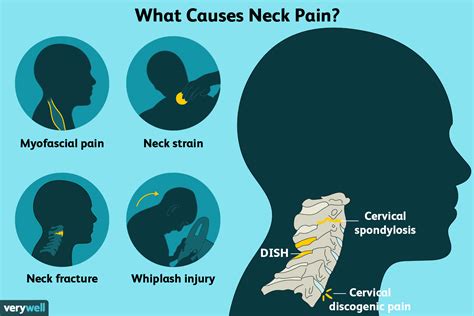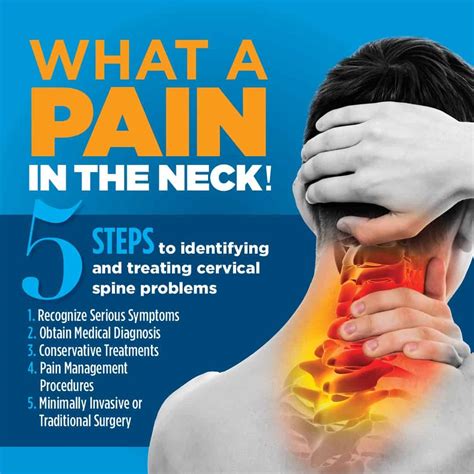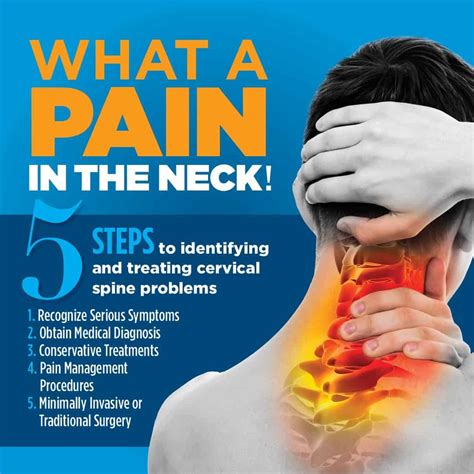Intro
Understand neck pain under jaw causes, symptoms, and relief options, including tension, TMJ disorders, and cervical spine issues, to find effective treatment and management strategies.
Neck pain under the jaw is a common complaint that can be caused by a variety of factors. The jaw and neck are closely linked, and problems in one area can easily affect the other. Understanding the causes and symptoms of neck pain under the jaw is essential for finding effective treatment and relief. In this article, we will delve into the world of neck pain under the jaw, exploring its causes, symptoms, diagnosis, and treatment options.
The importance of addressing neck pain under the jaw cannot be overstated. Not only can it be a significant source of discomfort and distress, but it can also be a symptom of an underlying condition that requires medical attention. By learning more about neck pain under the jaw, individuals can take the first step towards finding relief and improving their overall quality of life. Whether you are experiencing mild discomfort or severe pain, it is essential to understand the potential causes and seek medical attention if necessary.
Neck pain under the jaw can be caused by a range of factors, including poor posture, muscle strain, and underlying medical conditions. In some cases, the pain may be referred from another area, such as the teeth or sinuses. Understanding the potential causes of neck pain under the jaw is crucial for developing an effective treatment plan. By identifying the underlying cause of the pain, individuals can work with their healthcare provider to find a solution that addresses the root of the problem.
Causes of Neck Pain Under Jaw

Muscular Factors
Muscular factors are a common cause of neck pain under the jaw. The muscles in the neck and jaw work together to support the head and facilitate movement. When these muscles become strained or tense, it can lead to pain and discomfort. Poor posture, overuse, and injury are all potential causes of muscular neck pain under the jaw. For example, sitting at a desk for long periods with poor posture can lead to strain on the muscles in the neck and jaw.Skeletal Factors
Skeletal factors, such as misalignment of the spine or jaw, can also contribute to neck pain under the jaw. The spine and jaw are closely linked, and problems in one area can easily affect the other. Misalignment of the spine, also known as spinal misalignment, can put pressure on the muscles and nerves in the neck and jaw, leading to pain and discomfort. Similarly, misalignment of the jaw, also known as temporomandibular joint (TMJ) disorder, can cause pain and stiffness in the jaw and neck.Symptoms of Neck Pain Under Jaw

Pain or Tenderness
Pain or tenderness in the neck and jaw is a common symptom of neck pain under the jaw. The pain may be sharp or dull, and it can be constant or intermittent. In some cases, the pain may be worse with movement or activity, and it can be relieved with rest or relaxation. It is essential to seek medical attention if the pain is severe or persistent, as it can be a symptom of an underlying condition that requires medical attention.Stiffness or Limited Range of Motion
Stiffness or limited range of motion is another common symptom of neck pain under the jaw. The neck and jaw may feel stiff or tight, making it difficult to move or turn the head. In some cases, the stiffness may be worse in the morning or after periods of inactivity. It is essential to seek medical attention if the stiffness is severe or persistent, as it can be a symptom of an underlying condition that requires medical attention.Diagnosis of Neck Pain Under Jaw

Medical History
A medical history is an essential part of diagnosing neck pain under the jaw. A healthcare provider will ask questions about the pain, including its location, severity, and duration. The provider will also ask about any underlying medical conditions, such as arthritis or fibromyalgia, and any medications or supplements that may be contributing to the pain.Physical Examination
A physical examination is also an essential part of diagnosing neck pain under the jaw. The examination may include a range of tests, such as palpation, range of motion, and strength testing. The healthcare provider will also examine the neck and jaw for any signs of inflammation, such as redness or swelling.Treatment Options for Neck Pain Under Jaw

Conservative Treatments
Conservative treatments, such as rest, ice, and physical therapy, are often effective for treating neck pain under the jaw. Rest and ice can help reduce inflammation and relieve pain, while physical therapy can help improve range of motion and strength. In some cases, medications such as pain relievers or muscle relaxants may also be prescribed to help manage pain and discomfort.Invasive Treatments
Invasive treatments, such as surgery or injections, may be necessary for more severe cases of neck pain under the jaw. Surgery may be necessary to correct spinal misalignment or TMJ disorder, while injections may be used to relieve pain and inflammation. It is essential to work with a healthcare provider to determine the best course of treatment for your specific condition.Prevention of Neck Pain Under Jaw

Good Posture
Maintaining good posture is essential for preventing neck pain under the jaw. When sitting or standing, it is essential to keep the head in a neutral position, with the ears in line with the shoulders. Avoid slouching or leaning forward, as this can put strain on the muscles and joints in the neck and jaw.Regular Exercise
Regular exercise is also essential for preventing neck pain under the jaw. Exercise can help improve strength and flexibility, reducing the risk of injury or strain. It is essential to incorporate exercises that target the neck and jaw, such as neck stretches and jaw exercises, into your regular routine.Conclusion and Final Thoughts

We hope this article has provided you with a comprehensive understanding of neck pain under the jaw. If you have any questions or concerns, please do not hesitate to comment below. We also invite you to share this article with others who may be experiencing neck pain under the jaw. By working together, we can find effective solutions for this common complaint and improve our overall health and well-being.
What are the common causes of neck pain under the jaw?
+The common causes of neck pain under the jaw include muscular factors, such as muscle strain or tension, skeletal factors, such as misalignment of the spine or jaw, and neurological factors, such as nerve compression or irritation.
What are the symptoms of neck pain under the jaw?
+The symptoms of neck pain under the jaw include pain or tenderness in the neck and jaw, stiffness or limited range of motion, and difficulty swallowing or speaking.
How is neck pain under the jaw diagnosed?
+Diagnosing neck pain under the jaw requires a comprehensive evaluation of the neck and jaw, including a medical history, physical examination, and imaging studies, such as X-rays or MRI.
What are the treatment options for neck pain under the jaw?
+Treatment options for neck pain under the jaw depend on the underlying cause and may include conservative treatments, such as rest, ice, and physical therapy, or more invasive treatments, such as surgery or injections.
How can neck pain under the jaw be prevented?
+Preventing neck pain under the jaw requires a combination of good posture, regular exercise, and stress management, including maintaining good posture, incorporating exercises that target the neck and jaw, and practicing stress management techniques, such as meditation or deep breathing.
